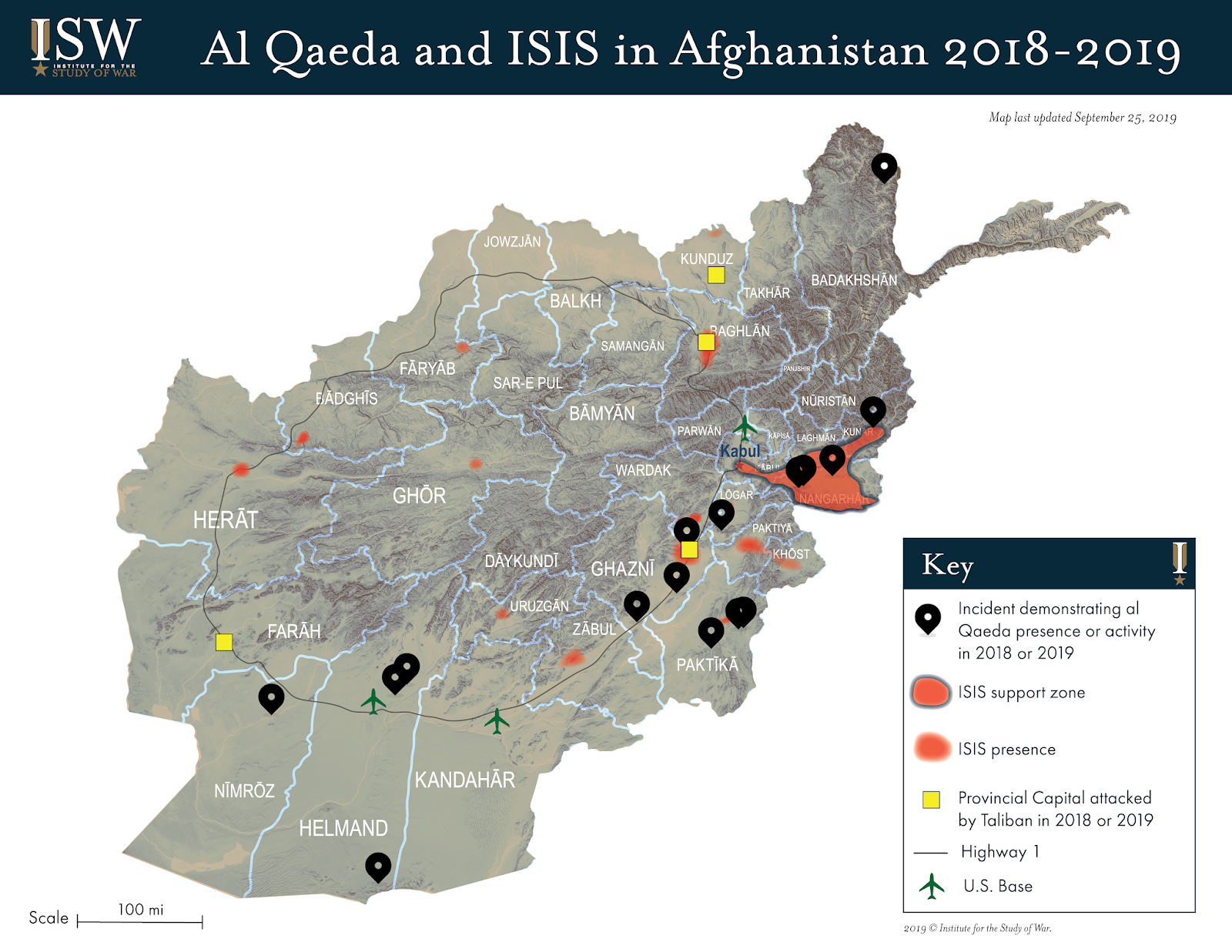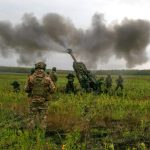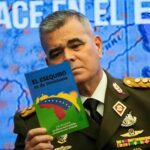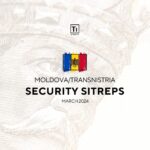As key IS-K territories are under pressure by the Afghan National Defense and Security Forces (ANDSF) and the rival Taliban, the group is seeking to capture new high-ground sanctuaries on the border with Pakistan. After defeating the Taliban in a turf war, IS-K is currently entrenching positions in the Korengal valley. While the group’s overall lethality has decreased, IS-K remains a threat for Transatlantic security interests and regional security. Since 2015, IS-K has conducted at least 83 attacks on government and civilian targets in both Afghanistan and Pakistan.
1.Since its inception in January 2015, the “Islamic State – Khorasan province” (IS-K) has been engaged in a multi-front war against the rival Taliban, the United States and the Afghan government. IS-K largely consists of disenfranchised Tehrik-e Taliban Pakistan (TTP) splinter groups, the Islamic Movement of Uzbekistan (IMU) and a small segment of foreign terrorist fighters (FTT) of other origin.
2. IS-K aims to establish an Islamic State in Central Asia (including, but not limited to Afghanistan and Pakistan), which would become a province of the wider global caliphate led by Abu Bakr al-Baghdadi. IS-K is in contact and has received direct support from ISIS central. Furthermore, high-value individuals fleeing from the Syrian and Iraqi battlefields have found shelter in Afghanistan.
3. To reach its objectives, IS-K is mobilizing hardcore Sunnis by escalating sectarian and takfiri violence, degrading trust in the Afghan government, and confronting local competitors. IS-K’s public communication efforts paint the Taliban as puppets of Islamabad, unwilling to enforce Salafi/Deobandi principles and unable to expel foreign military forces from Afghanistan. While IS-K uses coercion and forced recruitment for population control, the group also leverages local dynamics to gain legitimacy and enlist indigenous support.
4. In 2019, IS-K is less popular and under more pressured than ever before. The group has banned drug cultivation and trade, executed community elders, and imposed Sharia law on isolated tribes, causing unrest and uprisings. At the same time, joint U.S.-Afghan special operations raids have re-directed IS-K’s expansion from the Spin Ghar mountain range to borderlands controlled by the Taliban, resulting in escalating violence between the two insurgent groups.

Map of AQ and ISIS-K presence in Afghanistan as of September 2019 [UPDATED] via Institute for the Study of War
5. IS-K has built its territorial foothold in the TPP’s and IMU’s areas of influence. While the group did not succeed in capturing urban centers or large rural areas, IS-K controlled a number of Uzbek-villages in Jowjzan province and continues to find sanctuary in key valleys in the N2KL area (Nangarhar, Nuristan, Kunar and Laghman) on the border with Pakistan. IS-K also operates an unknown number of cells in more than ten other Afghan provinces, including Kabul and Herat. In Pakistan (PAK), IS-K is embedded with Khyber Pakhtunkhwa tribal agencies.
ENVIRONMENTAL RECONNAISSANCE (RECCE)
6. N2KL is located in the Hindu Kush mountain range on the Afghan-Pakistani (AFG-PAK) border. The area is strategic, as insurgent groups are able to leverage the porous border area to establish sanctuaries and move supplies.
- N2KL’s high, rugged, and mountainous terrain favors the defendant, as it is largely inaccessible by road and lacks landing zones for aircraft. Elevations range from 1,500 to 4,500 meters, with peaks of over 6,000 meters. The crests are sharp, slopes are steep, and the sparse mountain passes lie at an average elevation of 3,000 meters.
- Like any other insurgent group active in the area, IS-K needs to control the narrow capillary valleys in order to exploit the N2KL area’s high-ground advantage. Some of the key valleys are Mohmand/Mahmud, Bagh Da’ara, and Takho (Nangarhar province), as well as Korengal and Pech (Kunar province).
- The human terrain is even more challenging. The myriad of native tribes and ethnicities are hostile to foreign forces and prone to fratricide violence. Attempts to coerce the indigenous population into submission have traditionally led to violent uprisings.
7. Within the N2KL area, IS-K is currently the strongest in Nangarhar province. The group controls parts of the Spin Ghar mountain range in southern Nangarhar province and is highly active in the Mohmand and Takho river valleys in Achin district. Mohmand and Takho valley are inhabited by Mohmand Pashto tribesmen, whose settlement area extends across the AFG-PAK border into Tirrah valley. Deh Bala and Nazyan also experience significant IS-K activity. Over 60 percent of the provincial population is engaged in subsistence farming. Some inhabitants enjoy limited day-labor opportunities in Pakistan.
- As IS-K is the direct successor of certain TPP groups, the group falls back on pre-established networks in Nangarhar. 90 percent of IS-K members are Sunni Pashto, mostly from the Orakzai and Afridi tribes native to the Orakzai, North Waziristan and Kurram tribal agencies in Pakistan’s Khyber Pakhtunkhwa province (ex-Federally Administered Tribal Areas/ FATA).
- TTP militants first arrived in Nangarhar province, after a Pakistani military offensive ousted them from FATA in 2010. As a tit-for-tat retaliation against Pakistan’s systemic support for the Taliban, the Afghan Government colluded with the TTP and Lashkar-e-Islam in Nangarhar for a brief period. Over time, almost 2,000 TTP militants settled in Nangarhar’s Mohmand valley, resulting in an open confrontation with the Taliban.

Recce: Southern Achin District via T-Intelligence
- American air strikes augmented by joint U.S.-Afghan special operations raids have denied IS-K most of the high ground, driving IS-K underground or across the border. In April 2017, the United States Air Force dropped the GBU-43 “Mother of All Bombs” on an IS-K cave network in Achin district, killing over 90 militants. The ANDSF evicted over 20 IS-K militants from the Tora Bora cave complex in Pachir Aw Agam District, after the militants took the White Mountain from the Taliban.
- The United States maintains at least two combat outposts (COP) in the Mohmand and Takho valleys, while the ANDSF operates a number of checkpoints throughout southern Nangarhar. As its territory was denied in southern Nangarhar, IS-K aims to expand elsewhere in the N2KL area.
8. In Kunar province, IS-K recently gained control of the strategic Korengal valley after months of fighting with the Taliban – this information was confirmed by Kunar Provincial Council member Abdul Latif Fazly. Together with Pech valley, Korengal forms a strategic corridor that stretches from the AFG-PAK border to Nuristan. With the Pech-Korengal corridor under its control, IS-K can now supply operations that reach deeper into Afghan territory. However, the valley remains virtually ungovernable and volatile for all parties involved.

Recce: Korengal, Kunar, Pech and Shuryek valleys (Kunar province) via T-Intelligence
- The Korengalis are uniquely confrontational and hostile towards outsiders. The local population consists of isolated Durani Pashai-speakers and few Pashto Safi tribes, who have violently resisted all foreign forces entering the valley, including Soviet, American, Taliban, and al-Qa’ida forces. The local tribes are known for bad-blood violence against other tribes, particularly tribes in Pech valley and the eastern-dialect Pashai-speakers from Nangarhar. The Korengali Pashai are competing with the Pech valley Safi Pashto over timber trade in particular, while the Safi have a century-long feud with Korengali tribes that migrated from Nuristan.
- While isolationist at heart, the Korengalis have increasingly come to accept anti-governmental insurgent groups. The natives have been exposed to al-Qa’ida-associated Salafi/Deobandi preachers, TTP-established madrassas and foreign terrorist fighters over the past decades. The Taliban and now IS-K have managed to enlist the support of the local shura elders to legitimize their presence. The recent IS-K takeover of Korengal was enabled by the defection of an influential Taliban commander, who rallied local support for the group.

Recce: Korengal Valley (Kunar province) and past US/ISAF-Eastern Command (2006-2010) combat outposts via T-intelligence
- The IS-K control over Korengal will likely be short-lived. The Taliban are aggressively contesting the valley, while the Korengalis can be expected to grow hostile to the totalitarian governance model of IS.
9. Jowjzan became an IS-K territory when the Islamic Movement of Uzbekistan (IMU) merged with IS-K in mid-2015. As Jowjzan is Afghanistan’s only Uzbek-majority province, it traditionally served as a sanctuary for IMU.
- IS-K/IMU have been particularly active in the isolated Darzab and Qush Tepa districts. In Darzab, the group directly controlled the Mughul and Sar Darrah villages, while, in Qush Tepa, IS-K’s strongholds were the Khanaq, Beg Sar and Chakma Chaqur villages. In these areas IS-K was at liberty to conduct limited hisba policing.

Recce: SE Darzab district (Jowjzan province) via T-Intelligence
- The founder of IS-K in Jowjzan is Qari Hekmat/Hekmatullah, a defecting Uzbek Taliban commander. Native to the area, he mobilized the local Turkic community and facilitated the group’s territorial grip. In 2016 and 2017, IS-K grew largely unopposed, as the local Taliban wanted to avoid bloodshed among fellow Uzbeks. When negotiations failed in early 2018, the Taliban launched a full-scale offensive from the neighboring Faryab province.
- Around that same time, a series of Afghan Special Security Forces (ASSF) and U.S. SOF operations focused on dismantling IS-K’s leadership. The high-value targeting campaign removed platoon leaders, shadow governors and the top emir from the battlefield. Qari Hekmat was killed in a U.S. strike in Qorogh village, Faryab, on 5 April 2018. Afterwards, the joint ASSF-U.S. operations advanced to night raids directly on Moghul and Darzab villages.
- In mid-2018, IS-K in Jowzjan collapsed in the face of accelerated Taliban offensives. Mawlawi Habib Rahman, the new emir, and 230 IS-K fighters surrendered to the ANDSF in order to avoid the Taliban. The ANDSF airlifted the desperate fighters from their falling stronghold Moghul to Sheberghan. The IS-K fighters have joined the reconciliation process, which could potentially involve amnesty. Other IS-K fighters who evaded the Taliban fled to the neighboring Sar-e-Pol province.
10. In northwestern Afghanistan, IS-K seeks to exploit the growing ethnic tensions between Turkic, Pashtun and nomadic populations and leverage sectarian rifts with the Shia Hazara. The IS-K presence in the Northwest coincides with the Taliban’s attempt to contest government control in Faryab, Badghis and Herat province. Increased activities among Turkic populations could also increase the group’s reach into Central Asian states such as Tajikistan.
MASS-CASUALTY CAPABILITY (ATTACK MAP)
11. IS-K remains capable of conducting mass-casualty attacks against government and sectarian (mostly Shi’a Hazara) targets on a transnational scale. As our data analysis shows, Kabul and Jalalabad are particularly vulnerable to IS-K violence.

IS-K Attack map (2015-2018) via T-Intelligence
12. The data set consists of 83 attacks claimed by IS-K in Afghanistan and Pakistan from January 2015 to December 2018. Most attacks took place last year (48), followed by 2017 (20) and 2015-2016 (13). The lethality of attacks has gradually decreased, with a major drop in May 2018. Since then, the vast majority of IS-K attacks resulted in less than 20 casualties per attack. This coincides with IS-K’s territorial loss in Jowjzan and Nangarhar provinces. Out of IS-K’s top 10 most lethal attacks, only two were conducted in 2018:
- Quetta, PAK – 94 killed, almost 150 injured (August, 2016)
- Sehwan, PAK – 88 killed, 250 injured (February, 2017)
- Kabul, AFG – 84 killed, 250 injured (July, 2016)
- Kabul, AFG – 70 killed (April, 2018)
- Quetta, PAK – 61 killed (October, 2016)
- Kuzhdar, PAK – 56 killed (November, 2016)
- Kabul, AFG – 51 killed (November, 2017)
- Kabul, AFG – 49 killed (March, 2017)
- Gardez, AFG – 48 killed (August, 2018)
- Karachi, PAK – 46 killed (May, 2015)
13. Approximately 72 percent of the IS-K attacks targeted Kabul (39 percent) or locations in Nangarhar province (33 percent), primarily Jalalabad. Approximately 75 percent of IS-K targets were government sites, embassies or civilians, followed by 20 percent Shi’a gatherings or mosques. Overall, IS-K prefers suicide attacks augmented by small arms fire.
By HARM
Editing by Gecko
The cover photo shows the GBU-43 (MOAB) detonation in Mohmand valley, Nangarhar Province in April 13, 2017.
Mohmand valley is also known as Mamand and continues into Pakistan’s Anbar Mohmand tribal agency.
A small dissident segment of the IMU retained its allegiance to al-Qa’ida and the Taliban. The splinter group, which was announced on June 10 2016, denounced IS-K and claims the IMU brand.
Our data analysis encompasses the majority, but not all of IS-K attacks in Afghanistan and Pakistan. Furthermore, not all attacks have been precisely pint-pointed, some are estimated (district, city, neighborhood), given the sparse information released in the media.
If you like our content, please consider supporting us with a coffee: buymeacoff.ee/ur9UYj038
Founder of T-Intelligence. OSINT analyst & instructor, with experience in defense intelligence (private sector), armed conflicts, and geopolitical flashpoints.






I’ve never seen a story about Afghanistan that is as well supported by maps. Hats off!